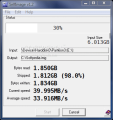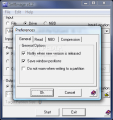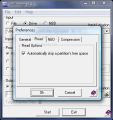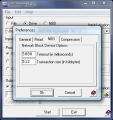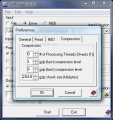Taking care of the most important files has become a more and more popular activity, especially with the avalanche of tools providing easy ways to create the much desired safety net. The market is full of both freeware and shareware alternatives and there are plenty to chose from, even if you want to pinch some dollars.
Some of the best alternatives on the market include Norton Ghost, Acronis True Image and Easy Image on the shareware side and DriveImage XML on the freeware side. All of them deal with creating an exact image of the targeted drive and restoring it when the situation requires it. If you backup the system drive, in the case of all of them, restoring the image takes little time as compared with the actual re-installation of the operating system.
SelfImage is yet another alternative to create images of your drives, images you can take comfort in. It is a freeware alternative that makes a 1:1 copy of any partition on both XP and Vista and comes with easy handling and quick processing. The functional side has been a priority for the developer as aesthetics has been overlooked.
Once launched, the application displays the settings and options directly, with no further ado and no bells and whistles will disturb you. There are basically three distinct sections in the main application window (Input, Processing and Output), each representing a stage in creating a backup file.
SelfImage is capable of creating images of both entire drives and individual files, saving them under IMG format. The Input section, just like the Output one, allows adding both files and entire drives and, besides this, it can also let you assign a place on the network (via Network Block Device server). The procedure is simple in either cases as all you have to do is to browse to the desired location and select the information.
The Processing section is not handled with much effort either, because your only options are to compress the resulting image to GZIP or BZIP2 or to let the software turn the files into plain IMG files. The Output section is to be used when defining the storage location for the image. It should also work when restoring an image to a partition, but unfortunately it is not the case for SelfImage, because the application works one way only.
During our testing, we were unable to restore an image of a drive to a partition as the options of the Output section do not allow the selection of partitions, but of entire drives only. More than this, mounting the resulting IMG file to a virtual drive was unsuccessful with both Virtual CloneDrive and UltraISO on both Vista and XP. The only way to restore the image of a partition is to use exactly the same drive, otherwise the process will result in utter failure.
Configuring the application is not hard and it really comes with a handful of settings, like notifying the user when new updates are available, warning when writing to a partition, skipping the free space on a volume, setting the NBD (Network Block Device) timeout (in milliseconds) and the size of the transaction, or choosing the desired compression settings (number of processing threads, GZIP compression level and chunk size).
The help file seems to be quite handy in some cases, but when restoring to a partition, there is no clear answer and the section appears to be incomplete because there is no full explanation available. However, in the case of NBD (network location) users benefit from details regarding the terminology used for this option.
SelfImage works at considerable speeds but there was nothing we could do with the resulting image file, which kind of leaves you the impression that the application is still an ongoing project. You will not be able to restore the image of a partition/file on other drive than the original one (at least that's what happened during our testing). When trying this operation, the process ended with an error and the drive targeted for restoring the image became unaccessible and needed formatting, causing the loss of all data on it.
The Good
SelfImage is extremely easy to use and will create an exact image of the drive you want. There aren't too many settings to configure and compression settings will make the resulting file smaller, thus saving you some space.
NBD locations can be used for both Input and Output locations with no problem. The application can automatically check for the latest updates and notify the user.
The Bad
Restoring an image has to be done on the original drive, otherwise the operation will end with an error. We could not restore an image of a file because attempting this ended in simply copying the IMG file to the newly provided location and not in restoring the original file.
Trying to restore an image to a different target (the software compares the size of the image with the size of the target location) resulted in formatting the latter.
Free space is skipped only if you decide to archive it, otherwise it will make an 1:1 copy of the selected partition.
The Truth
SelfImage makes for a good backup tool if you think about entire drives and do not attempt a restore on other partitions than the original one. The experience taught us all, however, that hard drives tend to have a certain lifespan and, once this happens, there is little you can do with the backup image file.
With SelfImage things are pretty simple and the effort is close to minimum, but there are plenty of issues you should think of and it seems that the developer has not fixed them yet.
Here are some snapshots of the application in action:
 14 DAY TRIAL //
14 DAY TRIAL // 